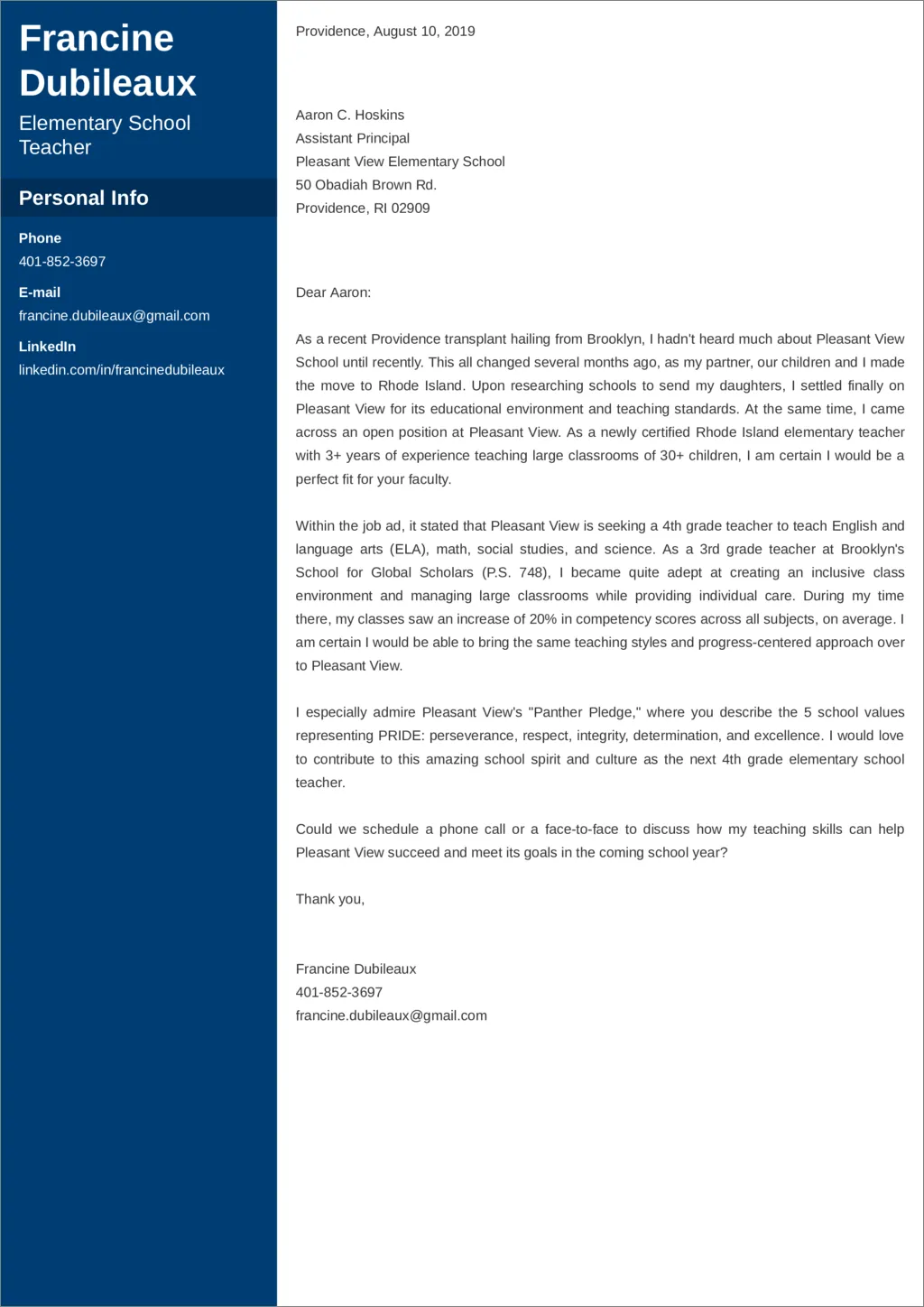Understanding the Purpose of a Teaching Cover Letter
A teaching cover letter is your first opportunity to make a strong impression on a potential employer. It’s more than just a formality; it’s a crucial marketing tool that allows you to showcase your personality, passion for teaching, and relevant skills. Unlike a resume, which provides a factual overview of your experience, a cover letter gives you the chance to tell a story, explaining why you are the perfect fit for the specific teaching position and the school’s environment. A well-crafted cover letter highlights your enthusiasm for education, your understanding of student needs, and your commitment to fostering a positive learning environment. It sets the tone for your application, demonstrating your professionalism and attention to detail.
Highlighting Your Skills and Qualifications
Your teaching cover letter should explicitly connect your skills and qualifications to the requirements outlined in the job description. Review the job posting carefully, and identify the key skills and experiences the school is seeking. Then, use your cover letter to illustrate how your background aligns with these needs. Provide specific examples of how you’ve demonstrated these skills in previous roles or experiences. This is an excellent way to show, not just tell, the hiring committee why you are the ideal candidate. By carefully choosing the examples and wording in your letter, you can present a compelling case for your abilities, increasing your chances of getting an interview. Remember to use action verbs to describe your achievements and responsibilities.
Skills to Showcase on Your Cover Letter
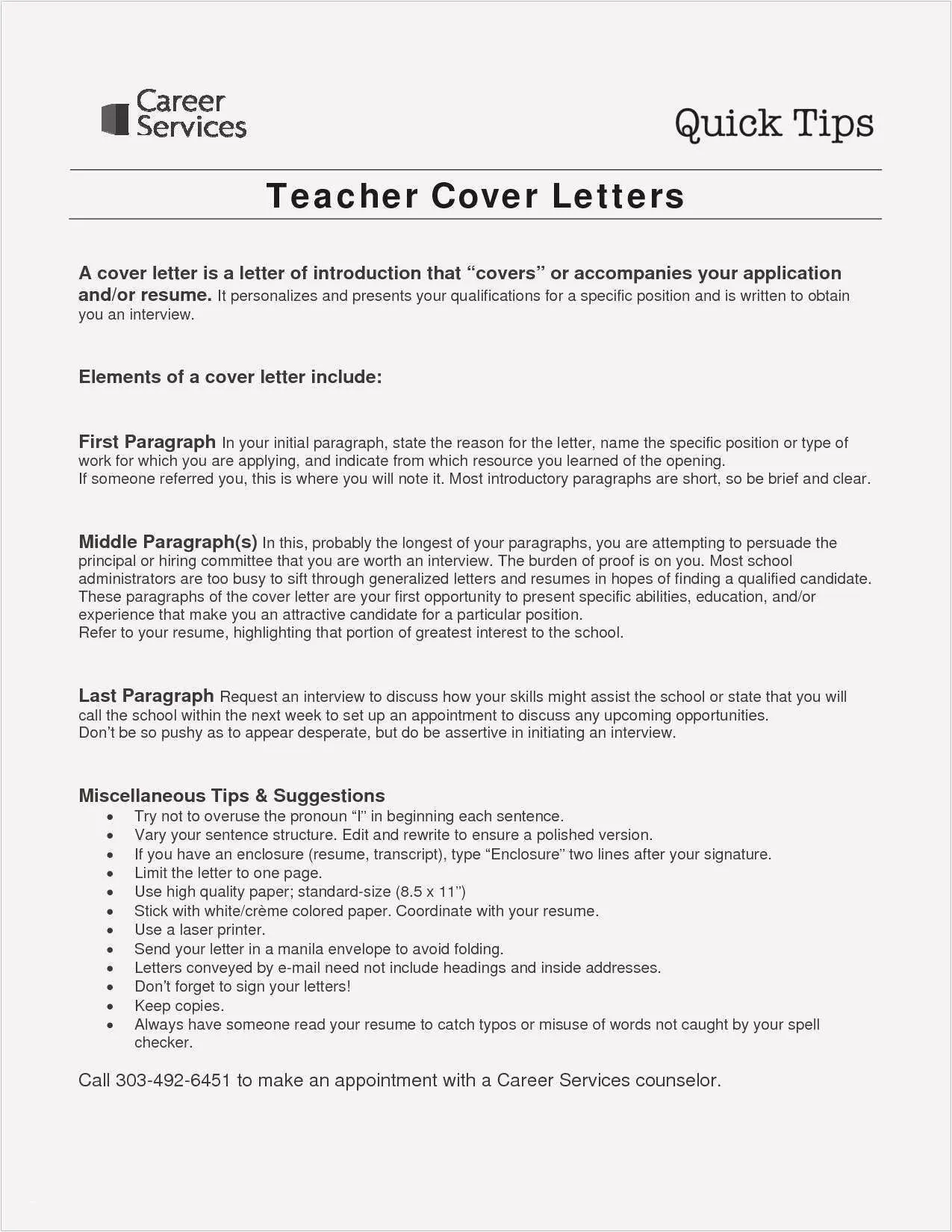
Several key skills are essential for success in a teaching role. Highlighting these skills in your cover letter will significantly enhance your application. Consider focusing on specific areas where you excel and have the most relevant experience. The best cover letters are targeted and highlight your unique selling points. The most important skills to emphasize are classroom management, curriculum development, and communication skills. These skills demonstrate your ability to create a conducive learning environment, deliver engaging lessons, and interact effectively with students, parents, and colleagues.
Classroom Management Skills
Effective classroom management is crucial for maintaining a productive and positive learning environment. In your cover letter, emphasize your ability to establish clear expectations, implement effective discipline strategies, and create a structured classroom setting. Provide examples of how you’ve successfully managed student behavior, resolved conflicts, and fostered a respectful learning environment. Mention specific techniques or programs you’ve used, such as positive reinforcement, restorative justice practices, or specific classroom management systems. Demonstrate your commitment to creating a safe and inclusive space where all students feel supported and motivated to learn. Include specific instances where your classroom management techniques have led to improved student behavior or increased engagement.
Curriculum Development Skills
Demonstrate your ability to design and implement engaging, standards-aligned lessons. Highlight your experience with curriculum planning, lesson development, and assessment creation. Mention any specific curriculum models or educational philosophies you are familiar with, such as differentiated instruction, project-based learning, or inquiry-based learning. If you have experience adapting curriculum to meet the diverse needs of students, be sure to include examples of your skills. Mention any experience you have with integrating technology into your lessons. By highlighting your curriculum development skills, you illustrate your commitment to providing high-quality instruction that meets the needs of all students.
Communication and Interpersonal Skills
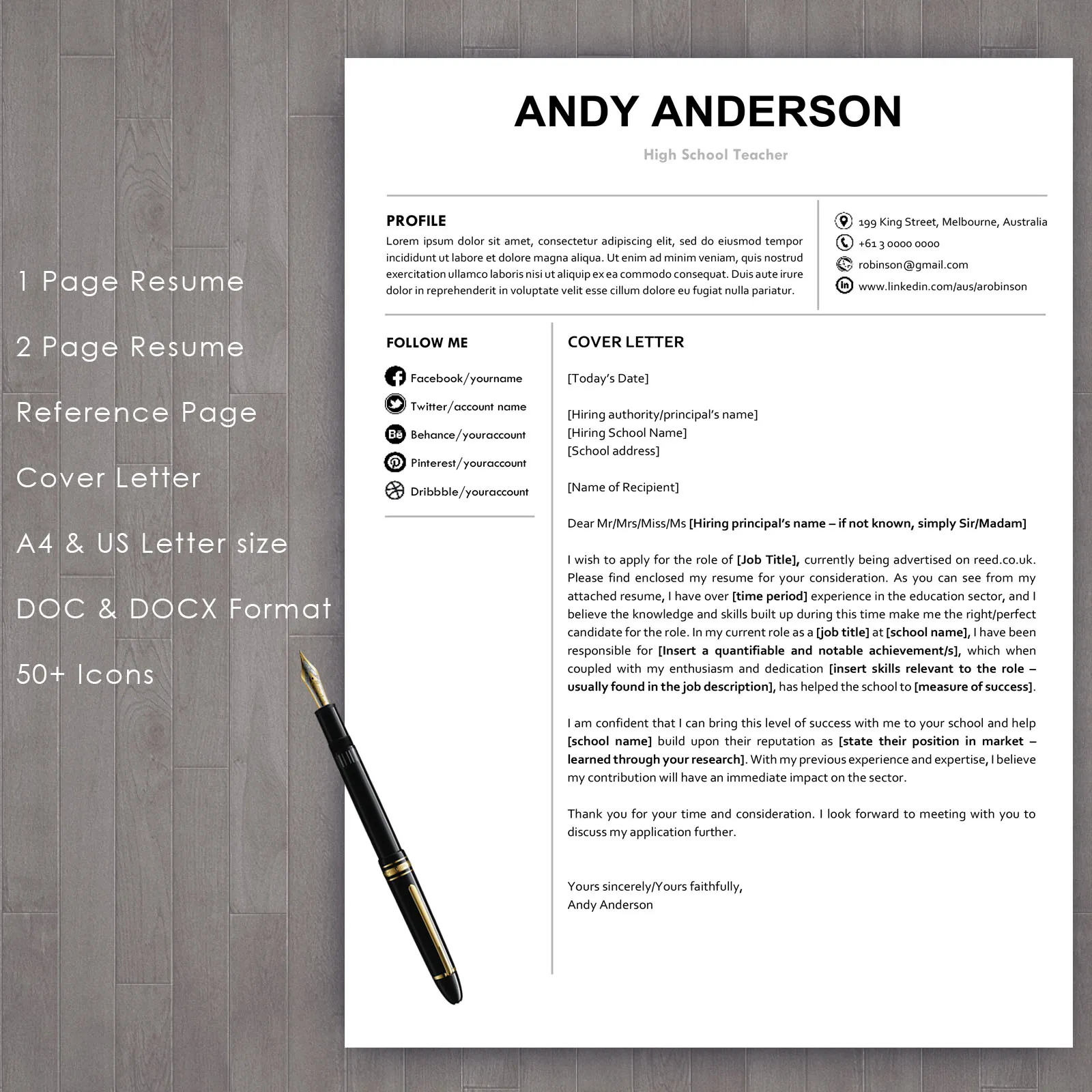
Strong communication and interpersonal skills are vital for building relationships with students, parents, and colleagues. Emphasize your ability to communicate effectively both verbally and in writing. Provide examples of how you’ve successfully communicated with parents about student progress, collaborated with colleagues on curriculum development, or built rapport with students. Highlight your ability to listen actively, provide constructive feedback, and adapt your communication style to different audiences. Your cover letter should showcase your ability to create a supportive and collaborative environment, demonstrating your commitment to teamwork and open communication.
Tailoring Your Cover Letter to the Specific School
Generic cover letters rarely impress. To make a lasting impact, tailor your letter to the specific school and position. Research the school’s mission, values, and any recent initiatives. This shows that you have taken the time to understand their unique needs and are genuinely interested in the opportunity. Customizing your cover letter demonstrates your professionalism and shows the hiring committee that you are serious about joining their team. Showcasing your understanding of the school’s environment increases your chances of getting selected for an interview. This personalized approach will distinguish your application from those using a generic, one-size-fits-all approach.
Researching the School’s Mission and Values
Before writing your cover letter, take the time to research the school’s website, mission statement, and any recent news or publications. Identify their core values and educational philosophies. Look for information about their student population, teaching methods, and any special programs they offer. This information will help you understand what the school is looking for in a teacher. You can then use this information to customize your cover letter to the specific needs of the school. If the school emphasizes a specific teaching approach, highlight your experience with that approach. If the school values community involvement, mention your experience with extracurricular activities or community service.
Demonstrating Your Alignment with the School’s Culture
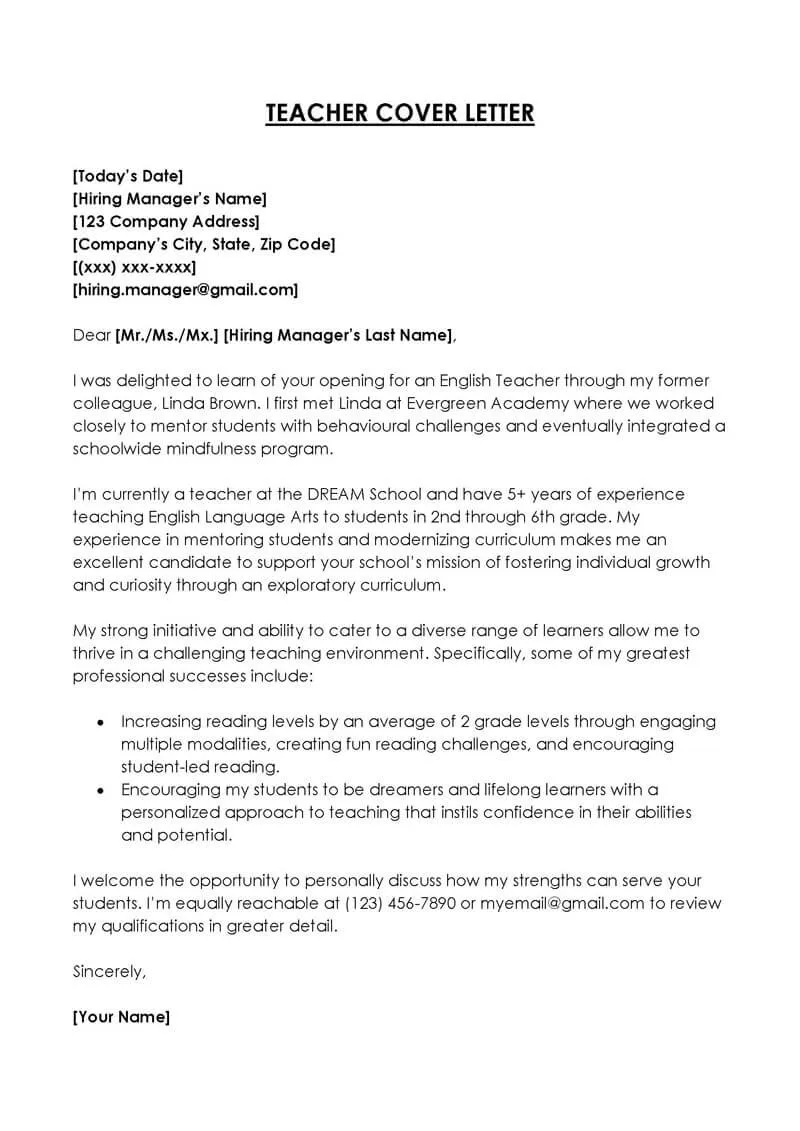
In your cover letter, demonstrate how your values and teaching philosophy align with the school’s culture. Explain why you are excited about the opportunity and how you believe you can contribute to the school’s mission. If the school values collaboration, highlight your experience working in teams or participating in professional development activities. If the school has a strong focus on technology integration, mention your experience using technology in the classroom. By demonstrating that you understand and share the school’s values, you’ll increase your chances of making a favorable impression. This alignment makes you more likely to fit in well with the school community and contribute positively to the learning environment.
Structuring Your Teaching Cover Letter
A well-structured cover letter is easy to read and highlights your key qualifications. A clear and organized format makes your application more appealing to the reader. Using a professional format allows the reader to easily find the essential information about your skills and experiences. The following components are essential for any strong teaching cover letter. Remember to proofread your letter carefully and format it neatly to make a professional impression.
Header and Contact Information
Start your cover letter with your contact information, including your name, address, phone number, and email address. This information should be placed at the top of the letter, aligned to the left or right. Ensure your contact information is up-to-date and professional. Directly below your information, include the date and the hiring manager’s name, title, and the school’s address. If you don’t know the hiring manager’s name, address the letter to the ‘Hiring Committee’ or ‘Dear Principal’.
Greeting and Introduction
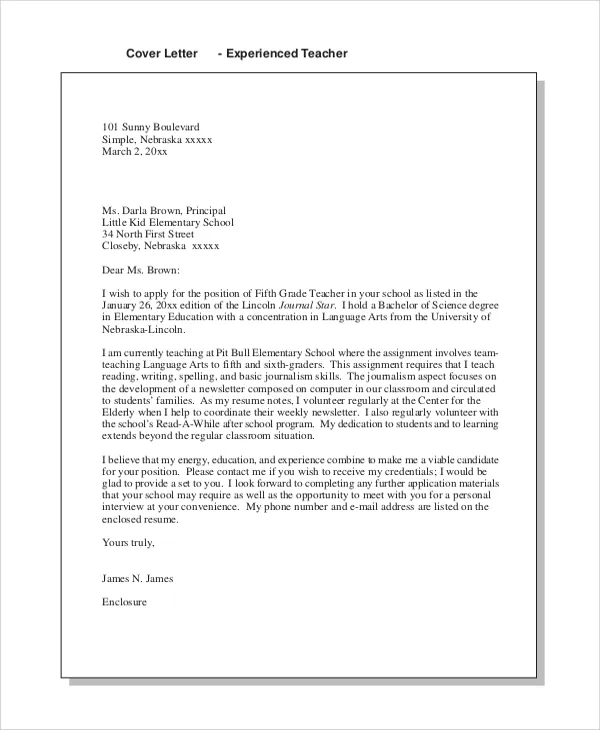
Start your cover letter with a professional greeting, such as ‘Dear Mr./Ms. [Last Name]’ or ‘Dear Hiring Committee’. In the opening paragraph, state the position you are applying for and where you found the job posting. Briefly introduce yourself and express your enthusiasm for the opportunity. Consider including a brief statement about your teaching philosophy or what you are most passionate about regarding education. This will set a positive tone and capture the reader’s attention from the start.
Body Paragraphs
The body paragraphs are the core of your cover letter. Use these paragraphs to highlight your relevant skills, experience, and accomplishments. Provide specific examples to support your claims, and connect your qualifications to the requirements outlined in the job description. In the first body paragraph, consider summarizing your key qualifications and how they align with the school’s needs. In the following paragraphs, delve deeper into specific experiences or projects that demonstrate your skills. Use action verbs and quantify your accomplishments whenever possible. Aim to create a compelling narrative that shows how your background makes you an ideal candidate.
Closing and Call to Action
In the closing paragraph, reiterate your interest in the position and thank the hiring committee for their time and consideration. Express your eagerness to learn more about the opportunity and your availability for an interview. End with a professional closing, such as ‘Sincerely’ or ‘Best regards’, followed by your typed name. This gives the reader a clear takeaway and lets them know how to contact you.
Showcasing Your Achievements
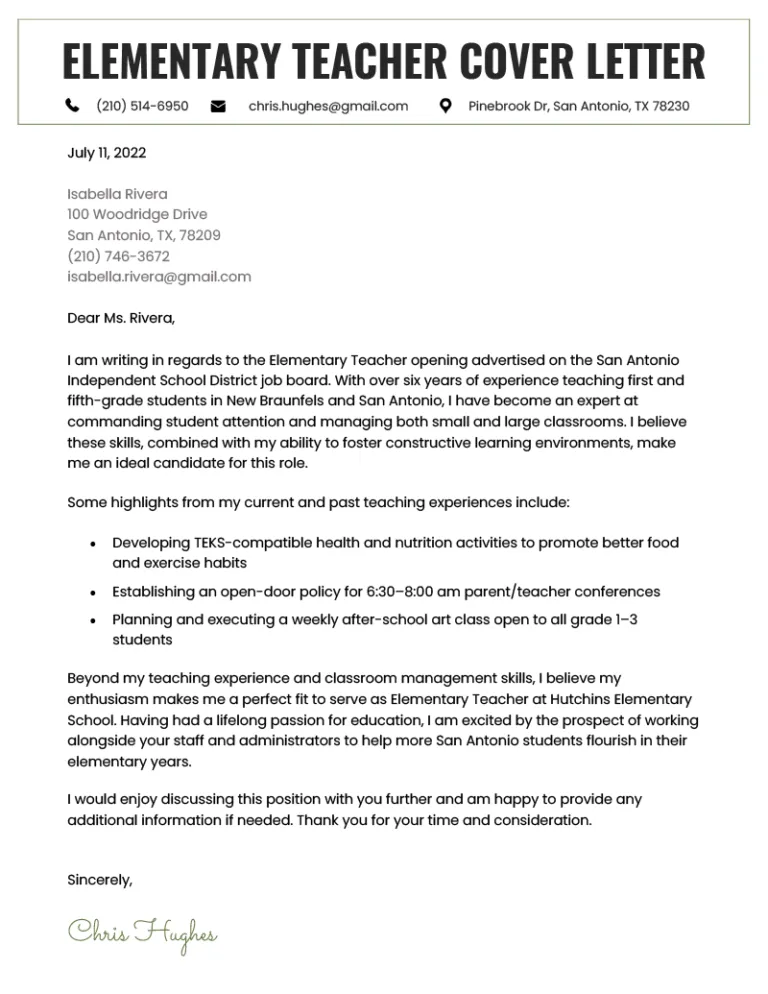
Highlighting your achievements is critical for demonstrating your impact and abilities. Instead of simply listing your responsibilities, use your cover letter to provide evidence of your successes. This helps differentiate you from other candidates and proves your effectiveness as an educator. Showing the achievements will showcase your impact.
Quantifying Your Accomplishments
Whenever possible, quantify your accomplishments. Instead of saying ‘Improved student test scores,’ say ‘Improved student test scores by 15% through the implementation of differentiated instruction strategies.’ Use numbers, percentages, and statistics to illustrate your impact. Quantifying your achievements helps the hiring committee understand the scope of your impact and the tangible results you have achieved. Adding in quantifiable data increases the effectiveness of your application and makes you look more attractive to employers.
Using Action Verbs to Describe Your Experience
Use action verbs to describe your experience and achievements. Action verbs make your cover letter more dynamic and engaging. Begin each bullet point or sentence with a strong action verb. This helps to create a strong sense of accomplishments. Examples of action verbs include ‘developed,’ ‘implemented,’ ‘managed,’ ‘collaborated,’ ‘assessed,’ ‘created,’ and ‘facilitated’. Action verbs show your accomplishments and keep the reader engaged.
Proofreading and Editing Your Cover Letter
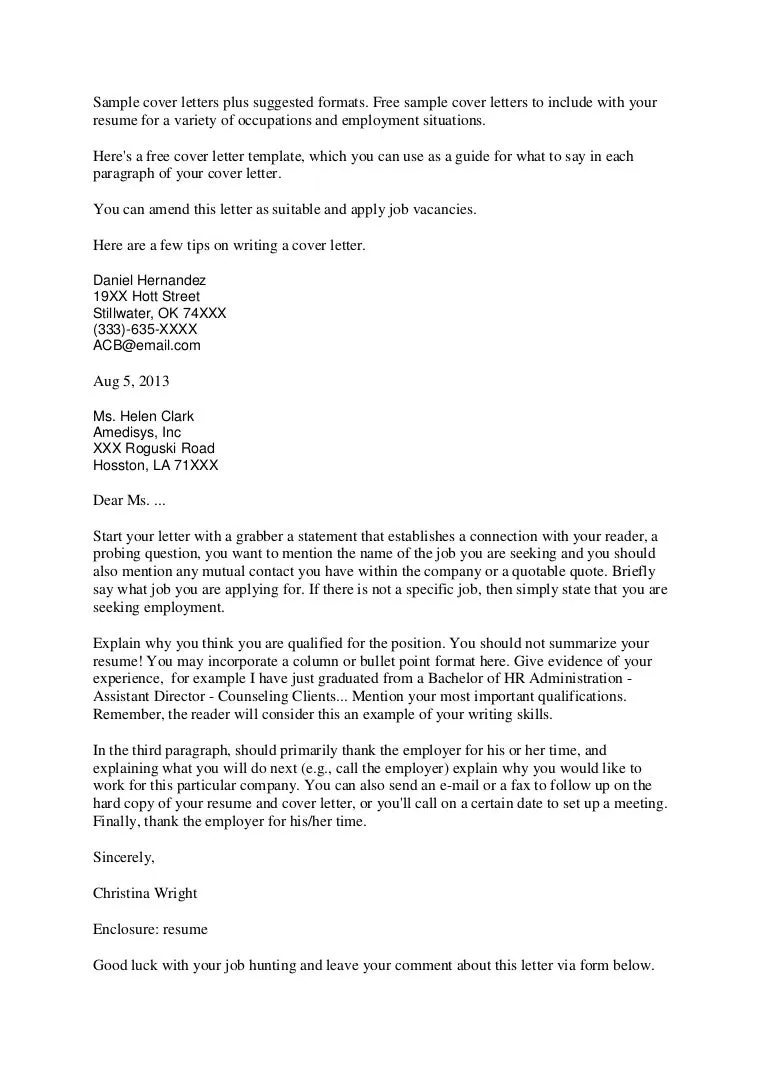
Before submitting your teaching cover letter, proofread and edit it carefully. Errors in grammar or spelling can create a negative impression and undermine your professionalism. Proofreading shows you care about the details and are meticulous. A polished and error-free cover letter ensures that your application represents you in the best possible light.
Checking for Grammar and Spelling Errors
Carefully check your cover letter for grammar and spelling errors. Use a grammar checker and spell checker to identify any mistakes. Read your letter aloud to catch any awkward phrasing or sentences that don’t flow well. Ask a friend, colleague, or mentor to review your letter for a second opinion. This will help you catch mistakes that you might miss on your own. Taking the time to carefully proofread and edit your letter is crucial to making a strong first impression.
Ensuring a Professional Tone and Format
Maintain a professional tone throughout your cover letter. Avoid slang, jargon, and overly casual language. Use a professional font, such as Times New Roman, Arial, or Calibri, and maintain consistent formatting throughout the document. Ensure your letter is well-organized, with clear headings and paragraphs. The overall appearance of your cover letter can impact the hiring committee’s perception of your application. A well-formatted and professional-looking cover letter shows attention to detail and a commitment to excellence.
